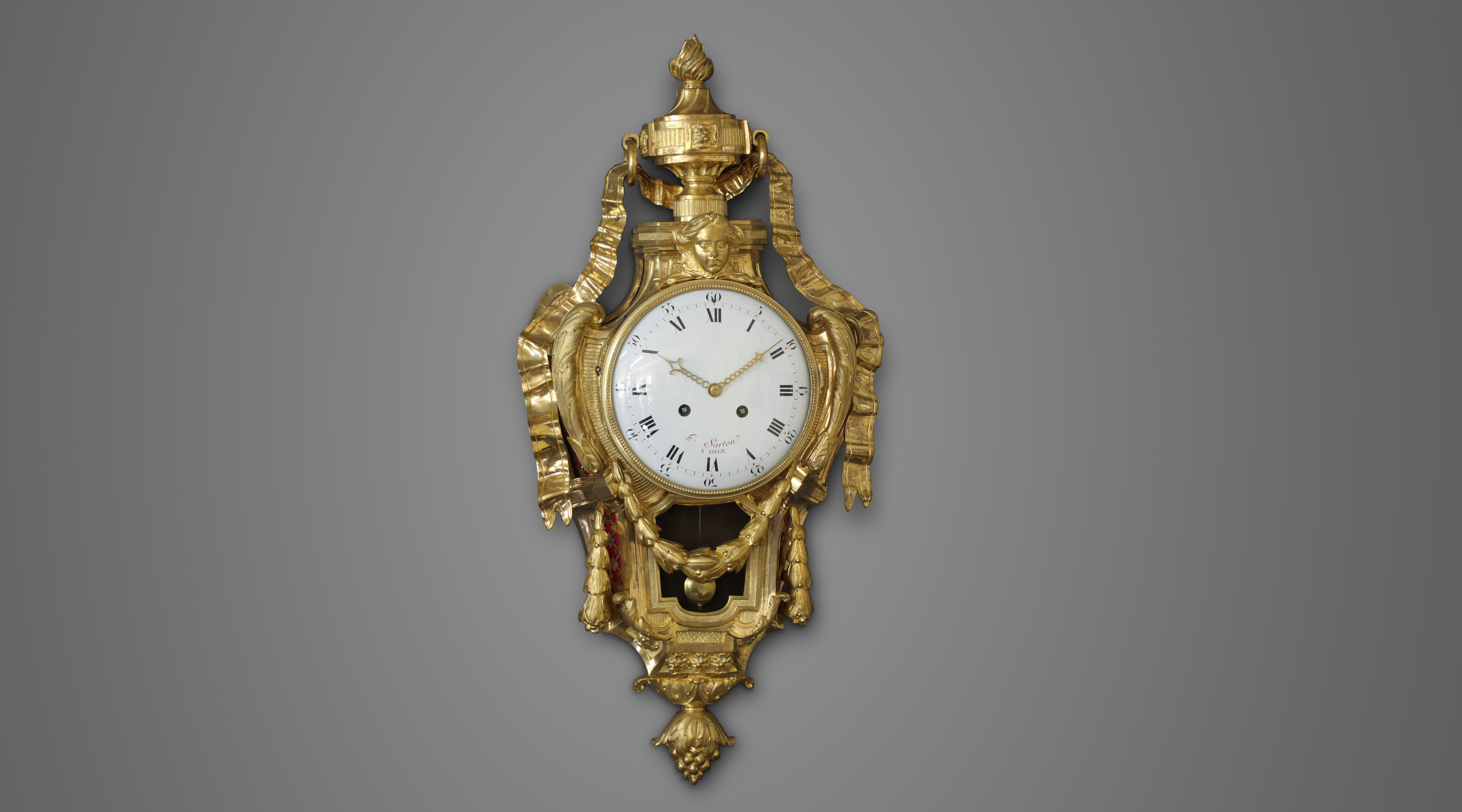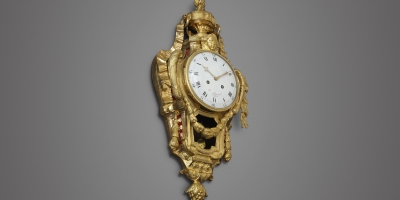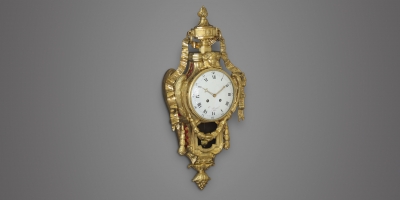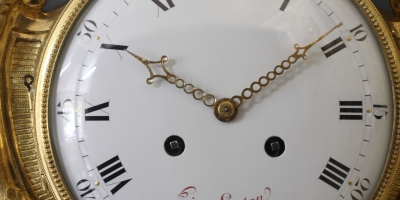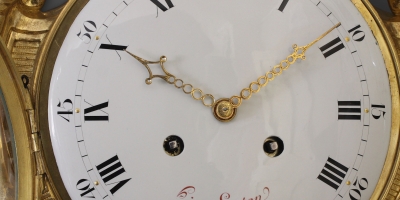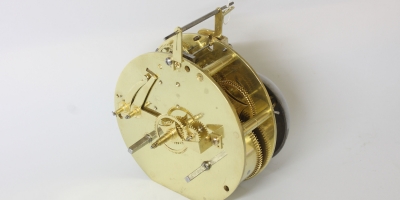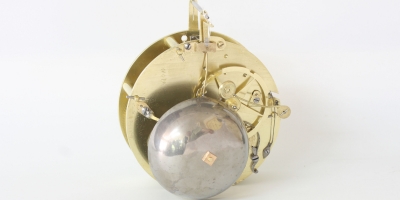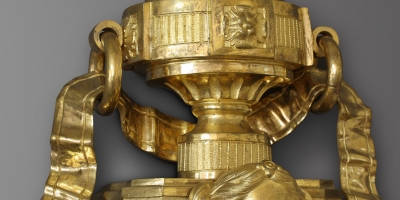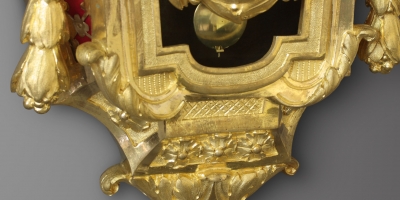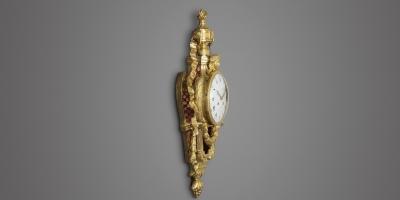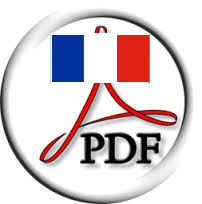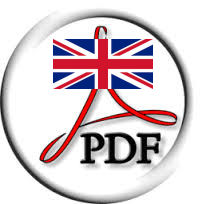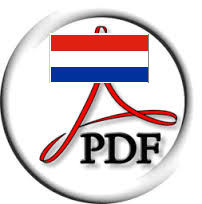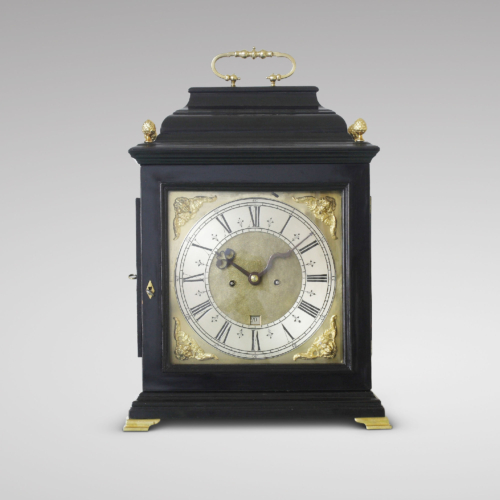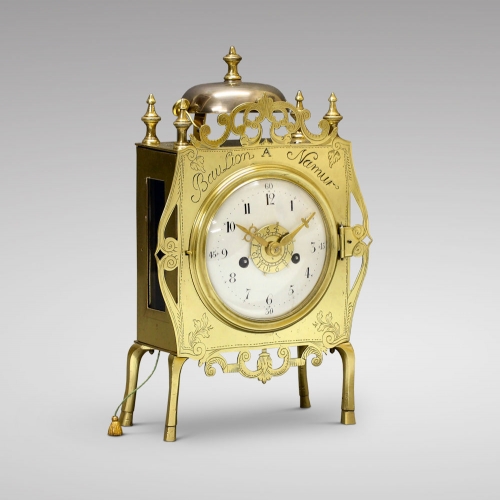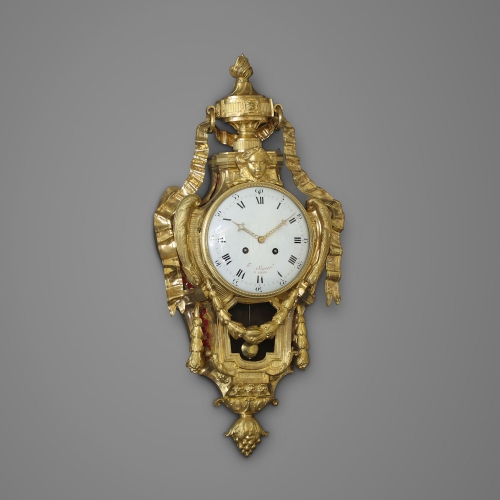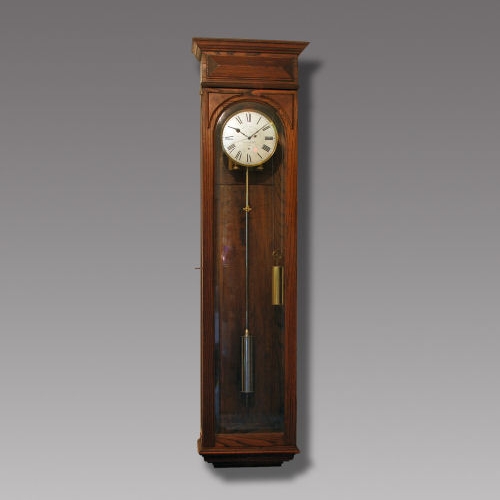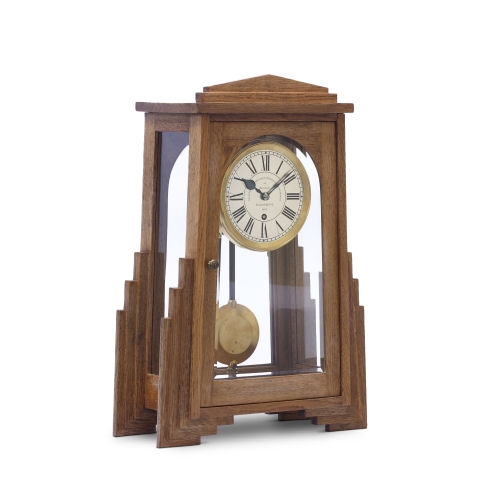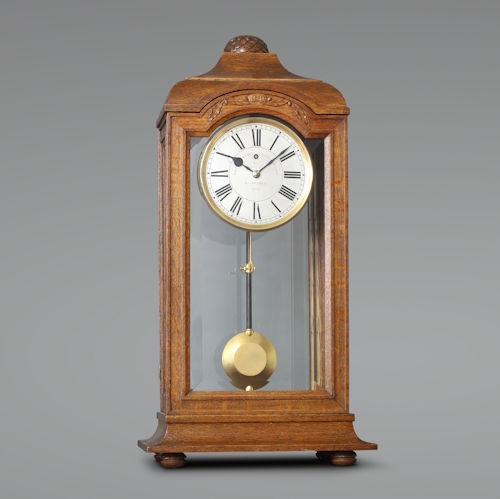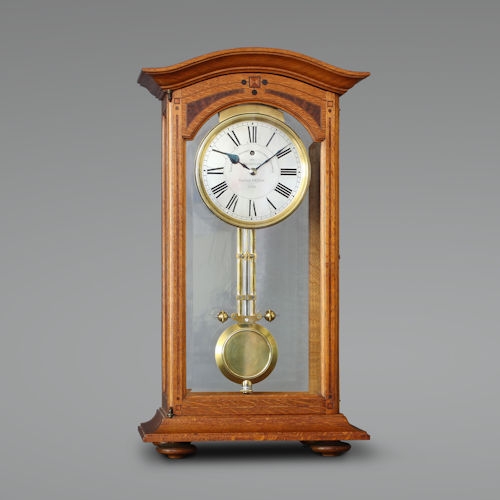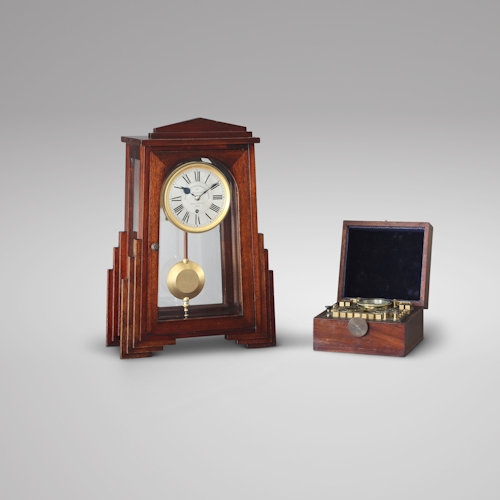French Wall Cartel « Mask of Apollo », from a model by Osmond.
Ormolu, Louis XVI-period, circa 1785. Two-train movement, with anchor recoil escapement of the tic-tac type and silk-suspended pendulum. Half-hourly strike on a sivered bell, with countwheel. Two-weeks autonomy.
Enamel dial with Roman numerals for the hours and Arabic numerals for the five-minutes intervals. Red signature h. Sarton A LIEGE. Very finely cut, engraved and gilt brass hands.
Fire-gilded bronze case of architectural form with acanthus leave garlands and ribbons. Fire-urn on top and pomegranate at the bottom.
Dimensions
H. 71 cm (28"), W. 36 cm (14"), D. 13 cm (5")
Robert OSMOND,
founder, bronzier, was established rue Maclou in Paris in 1773, he made cases for the most renowned Parisian clockmakers: Lepaute, Robin, Charles Le Roy, etc…
HUBERT SARTON,
(1748-1828), horologist to the court of princes.
Hubert SARTON (1748-1828) lived during a momentous period in history. A product of the Enlightenment, he was also a precursor of the industrial age. Furthermore he was fortunate enough to grow up and live in Liège, which at the time was one of the most dynamic artisan and industrial centres in Europe. Very little has been written about him, yet his contribution to the art of horology is of great importance. He began learning the trade working for his uncle Dieudonné Sarton in 1762, where he demonstrated a remarkable talent for the mechanical sciences. After completing a four-year apprenticeship in Paris at the workshop of Pierre Leroy, eldest son of Julien and brother of Jean-Baptiste Leroy, he returned to Liège in 1772 as Master Clockmaker. Soon after he was appointed ‘Court Clockmaker’ to Duke Charles Alexander of Lorraine, Governor General of Austrian Netherlands, then, as ‘First Mechanic’ to Prince Bishop François-Charles de Velbrück, he enjoyed the benefits of a privileged position which extended his reputation well beyond the Principality of Liège. He also played a civic role being appointed Commissioner and Treasurer of the city of Liège in 1783. In a report published in 1789, the workshop of Hubert Sarton is described in terms that reflect the diversity and quality of his work, as well as his concern for innovation: “At HUBERT SARTON in Liège and Spa, one finds a most comprehensive assortment of clocks and watches, in the latest styles, like gold and silver watches of all kinds […]. One also finds a beautiful assortment of clocks from the most simple to the most complex.” Eleven years later, the French Revolutionary troops stormed Liège putting an end to Austrian rule. It is hard to ascertain exactly what consequences this historic event had on Hubert Sarton’s career. It appears from that time forward he concentrated on the production of skeleton clocks in a variety of models. The number of clocks produced suggests that Sarton certainly managed a large workshop with numerous employees – although no documentation has survived to either confirm or contradict this. Famous for inventing the automatic watch based on a rotor principle, for which he filed a patent at the French Academy of Sciences in 1778, Hubert Sarton created a variety of timepieces throughout his career – Louis XV cartels, Louis XVI mantle clocks, lyre mantle clocks, pendules de compagnie (company clock or waiting-room clock) skeleton clocks and regulators – all equally remarkable for their extraordinary quality and diversity. At once a devoted horologist, mechanic and inventor, Hubert Sarton was one of the major figures of horology in late eighteenth-century Liège. An enlightened man of his time, keen on progress and innovation, his considerable career unfolds as a long series of developments. Having successfully advanced all branches of his trade, this able mechanic dedicated to the art of horology became a master of his art, as witnessed in the exceptional quality and great refinement of his production.
Bibliography
Tardy Dictionnaire des horlogers français, Paris, 1972;
Jean-Dominique Augarde Les Ouvriers du Temps, La Pendule à Paris de Louis XIV à Napoléon Ier, Genève 1996;
Florent Pholien L'Horlogerie et ses Artistes au Pays de Liége, 1933;
Ann Chevalier et André Thiry L'Age d'Or de l'Horlogerie Liégeoise, 2003;
Jacques Nève Les pendules d'Hubert Sarton, 1748-1828, Horloger-Mécanicien, Inventeur, mémoire présenté en 2009 à la Chambre Nationale des Experts Spécialisés en Meubles, Estampes, Livres, Objets d'Art et de Collection, Paris, 2009.
Musea
Brussels, Musées Royaux d’Art et d’Histoire ;
Mons, Musée François Duesberg ;
Liège, Musée Curtius et Musée d’Ansembourg ;
Vienna, Uhrenmuseum.
Price
€ 14,500
